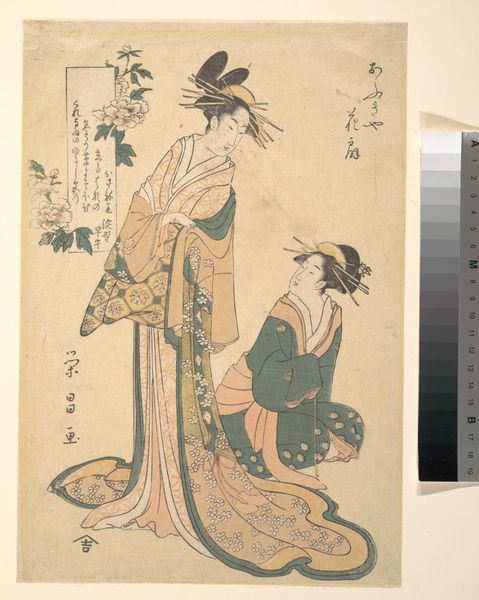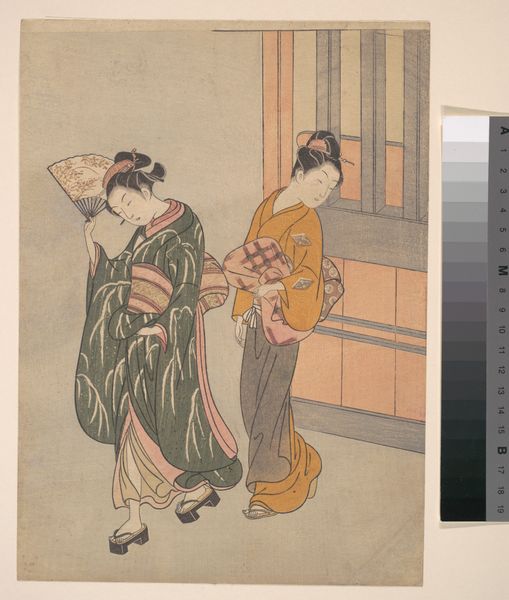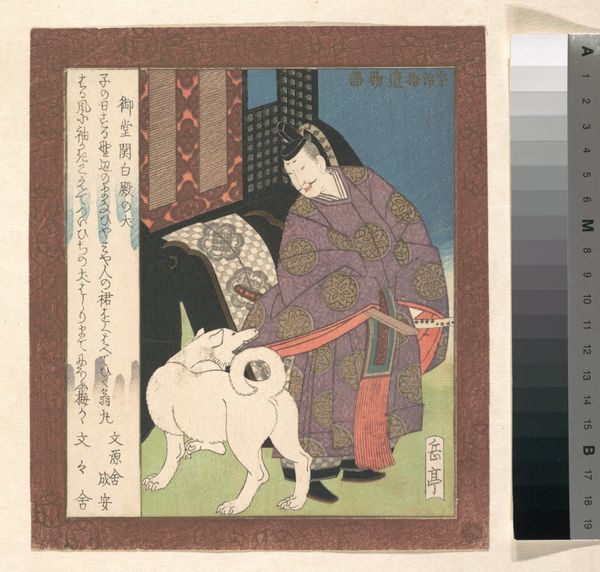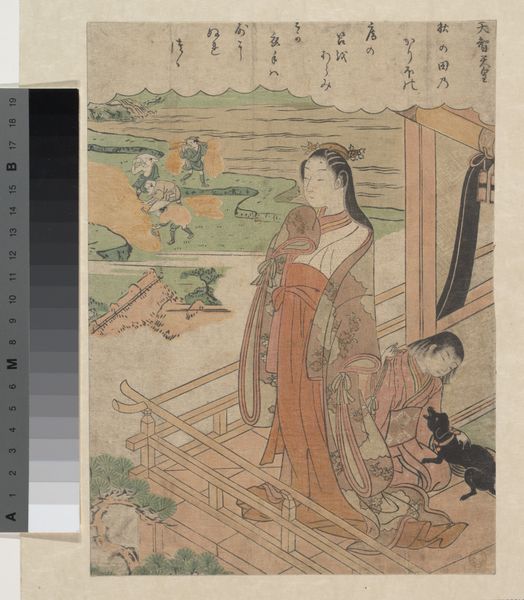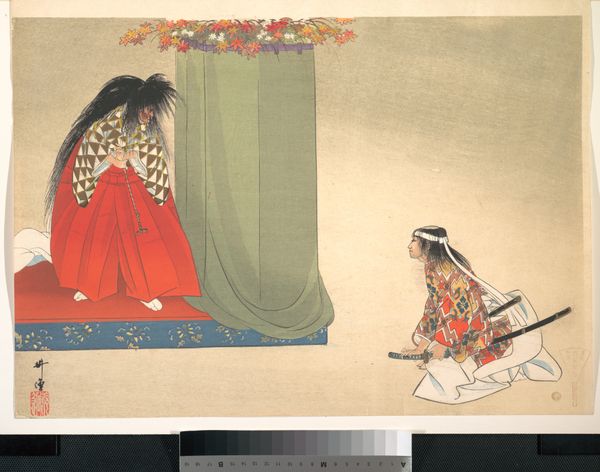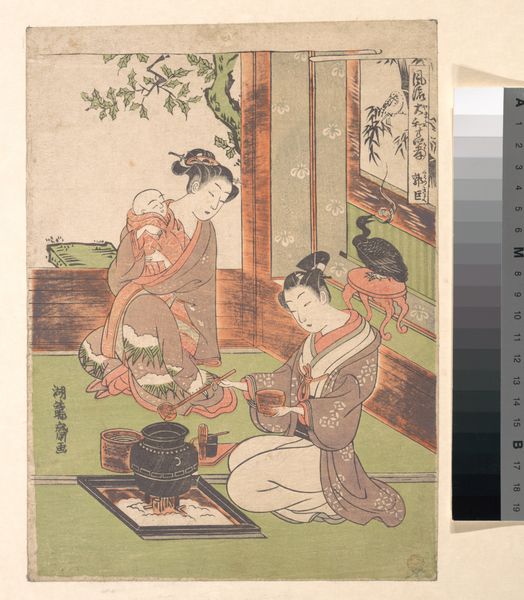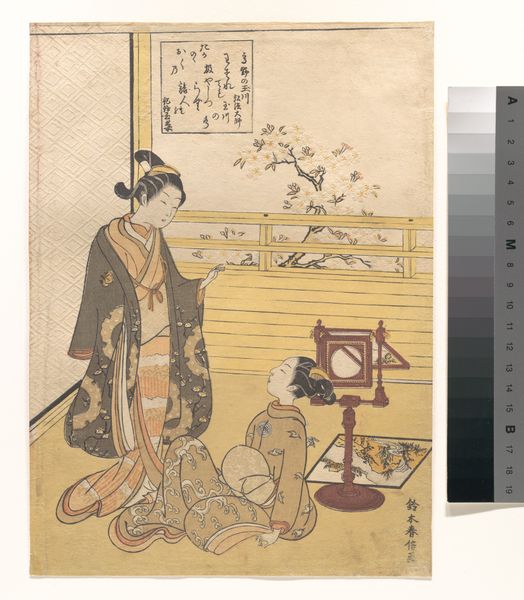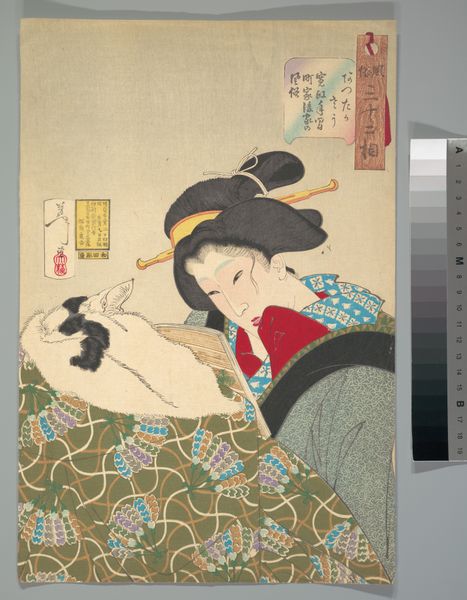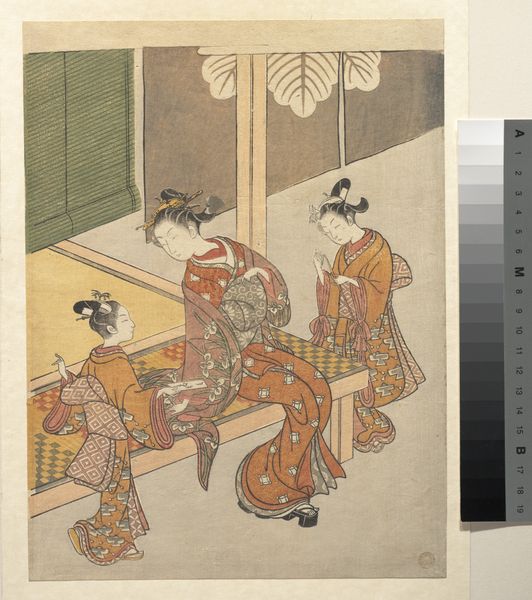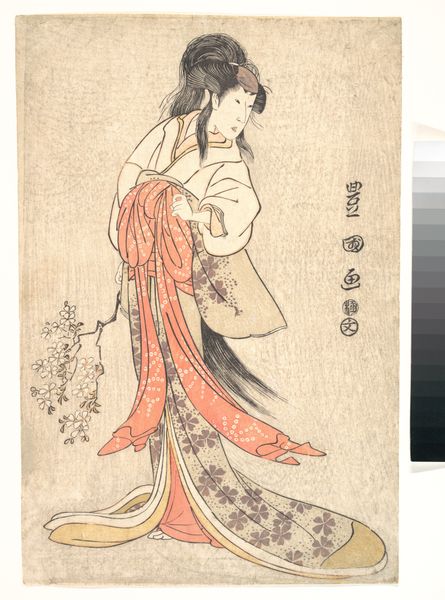
A Girl on the Edge of a Stream Sees a Demon's Head in the Water 1710 - 1792
0:00
0:00
print, woodblock-print
#
girl
#
narrative-art
# print
#
asian-art
#
sketch book
#
landscape
#
ukiyo-e
#
figuration
#
woodblock-print
#
line
#
erotic-art
Dimensions: H. 10 9/16 in. (26.8 cm); W. 8 7/16 in. (21.4 cm)
Copyright: Public Domain
Editor: Here we have "A Girl on the Edge of a Stream Sees a Demon's Head in the Water," a Japanese woodblock print by Komatsuken Shoshoken, dating sometime between 1710 and 1792. The composition and the narrative element are really striking to me. What catches your eye in this piece? Curator: I'm immediately drawn to the labor involved in creating this ukiyo-e print. Think of the carving, the inking, the registration of each color block. Each step involved skilled artisans, not just the artist whose name we know. Editor: That’s a really interesting point, how the final piece represents so many different people's work and skills. So the making of it is very collaborative. Curator: Exactly! And it's not just artistic labor. What about the materials themselves? The paper, the inks - where did they come from? Were they locally sourced or part of a wider trade network? And for whom was this print made, and how was it distributed? Editor: You're making me consider the layers of production and consumption that often get overlooked. So it is about the life cycle, so to speak, of the artwork. Curator: Precisely. Ukiyo-e prints weren't "high art" in their time. They were popular, mass-produced objects. Thinking about this piece as a commodity shifts our perspective on its artistic value. We need to consider the economic structures supporting this form of image making and how it affected the lives of those involved, not just the elite art consumer. Editor: This way of considering the print definitely expands my understanding of it! I was so focused on the image itself. Curator: Considering the materials and the context allows a far deeper understanding, especially about art from different periods. I’ll keep an eye out for the labour behind the artwork moving forward!
Comments
No comments
Be the first to comment and join the conversation on the ultimate creative platform.


